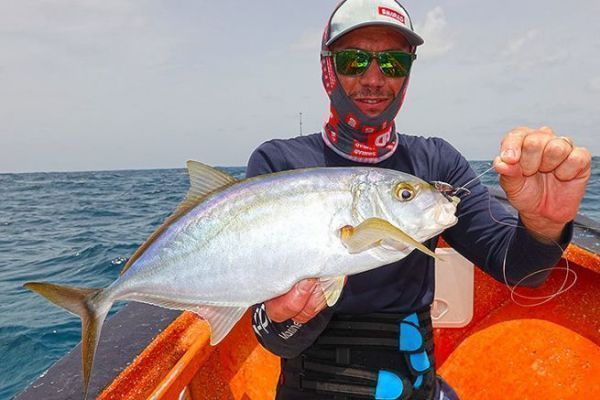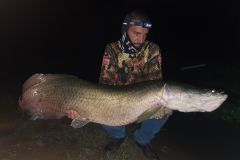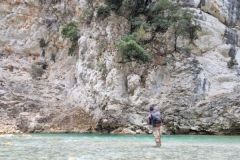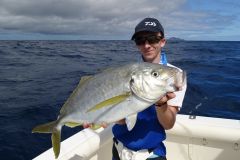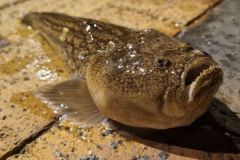Scientific name
Carangoides bartholomaei (Cuvier, 1833)
Morphology
The fat carangue is commonly called the yellow carangue in France and "yellow jack" or "jack fish" in English-speaking countries. It has a round back and a massive body. It has large, curved, yellow pectoral fins.
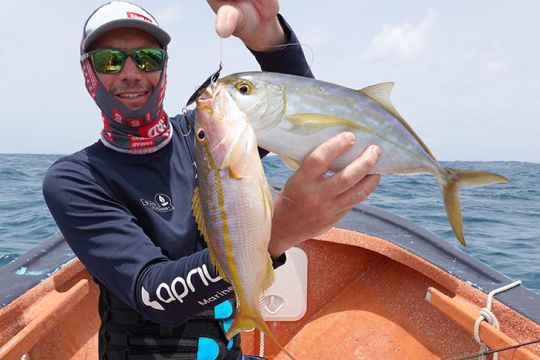
It has a yellow eyebrow between the eyes. Like the caranguidae, it is built for speed. Its pectoral fins, dorsal fin and caudal fin are yellow, while the upper back is bluish.
Fishing spots
Yellow jacks are common in the Caribbean. This species is one of only two species of caranguidae present in the Atlantic Ocean, along with the blue carangue ( Caranx ruber) . It commonly lives in reefs and feeds on small fish.
Fishing techniques
The fathead trevally is a fun little fish to catch on light tackle. Bay jigging baitcasting tackle allows you to use light jigs and have fun with this fish with its excellent power-to-weight ratio.
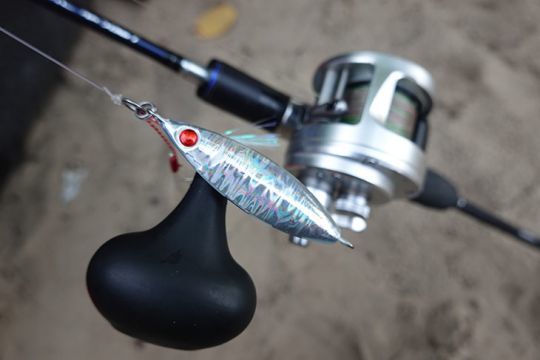
Best fished with small jigs, the bright white colors are excellent. You'll need a 0.14 or 0.16 mm diameter braid and a 2 m 0.40 mm fluorocarbon leader.
Reproduction
The fathead trevally reaches sexual maturity between 23 and 32 cm. They reproduce in offshore waters from February to October.
Size and weight
- Legal catch size (legal minimum): none, I recommend 32 cm
- Size at sexual maturity: 23 to 32 cm
- Average size: 25 to 35 cm
- Maximum size/weight: 1 m (14 kg)
- World record: 10.77 kg - 86.3 cm (Duck Key, Florida, USA, 19/11/2013)
Good to know
Scientific name Bartholomaei comes from the island of Saint-Barthélemy. But it is commonly found in Florida and the French overseas departments and territories: Martinique and Guadeloupe.

 /
/ 